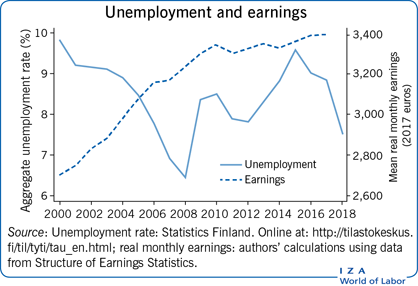Elevator pitch
Finland's population is aging rapidly by international comparison. The shrinking working-age population means that the burden of increasing pension and health care expenditures is placed on a smaller group of employed workers, while the scope for economic growth through increased labor input diminishes. Fiscal sustainability of the welfare state calls for a high employment rate among people of working age. Recent increases in employment contribute favorably to public finances, but high overall unemployment and a large share of the long-term unemployed are serious concerns.

Key findings
Pros
Labor force participation and employment rates of older groups have increased considerably.
Although unemployment is at a relatively high level in the aftermath of the financial crisis and subsequent recession, it could be much higher, particularly considering the larger effect of the recession in the 1990s.
The unemployment rate declined rapidly from 2015 through 2018.
The gender wage gap has declined, although this is partly due to job losses among men in the recession years.
Wage inequality has remained stable and it is still low compared to most other advanced countries.
Cons
The employment rate among the working-age population is low compared to other Nordic countries.
Long-term unemployment, underemployment, and disguised unemployment remain high.
GDP remained below its 2008 level until 2016, and real earnings have hardly increased since 2010.
Some indicators point to a growing gap between the skills needed in new jobs and the skills possessed by unemployed job-seekers.